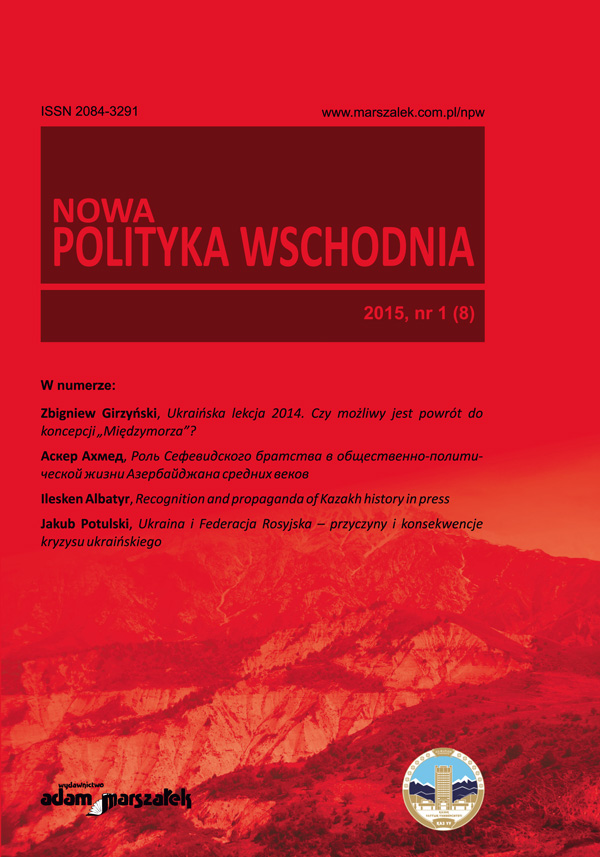Losy polskiego dziedzictwa kultury na radzieckiej Ukrainie (1922–1991) Część I: 1922–1945
The fate of the Polish cultural heritagein the Soviet Ukraine (1922–1991). Part I: 1922–1945
Author(s): Dariusz MatelskiSubject(s): Fine Arts / Performing Arts, Cultural history, Recent History (1900 till today)
Published by: Wydawnictwo Adam Marszałek
Keywords: Ukraine;Polish culture;national heritage;revindication;international relations
Summary/Abstract: The article deals with the fate of Polish cultural heritages in Eastern Borderlands from the establishment of Ukrainian Soviet Socialist Republic in December 1922, to its collapse in December 1991. The first part of the article ends at 1945 (end of Second World War). Under international law in relation to Soviet Russia and Ukraine the issues of repatriation and revindication – after the war in 1920 – was normalized by 11 Article of the Treaty of Riga (18 March 1921) with executive instructions. Lithuanian Metrica, however, did not return to Warsaw, but remained in Moscow, while the Polish side received a summary of the Metrics Lithuania (made in the years 1747– –1750 in the royal Office) held by the former Chief of Staff Library in Leningrad.On September 17, 1939 Soviet invasion completely surprised Polish authori-ties, evacuation plans did not provide for such an eventuality. Ukrainian SSR au-thorities took control not only of museums, archives and libraries in the areas oc-cupied by the Red Army, but also have taken over the Polish heritage evacuated to the area before and during the war with the Third Reich. Quite often Polonica were destroyed or put to scrap paper.The German occupation in the Eastern Borderlands of the Second Republic lasted from 22 June 1941 until the summer of 1944. At that time – in fear of the approaching Red Army – the German occupation authorities started the evacua-tion of Polish cultural goods to Krakow and Silesia.Along with the Red Army returned the Soviet authorities. In Lvov organiza-tional state of archives, libraries and museums of 1941 was restored. Many Poles were released from positions in these institutions, and the newly appointed direc-tors were reluctant to refer to anything associated with Poland. In the years 1944– –1945 all cultural goods in areas beyond the Bug River – after numerous robber-ies carried out by the Red Army – went to the central or regional USSR archives or museums.Polish preparations for the restitution of cultural property continued through-out the war. Office of Cultural Losses Revindication was formed in the Ministry of Congress Works of Polish government in exile. It was directed by Charles Es-treicher Jr. (1906–1984), who managed to get to France and, at the beginning of 1940, formed the nucleus of the Office of Cultural Losses Revindication under the Ministry of Information and Documentation. It gathered information from ar-chivists, museum curators and librarians from the occupied country and trans-ferred them to the Central Institute of Art and Design at the National Gallery in London – formed by Polish initiative in 1941. In the spring of 1944 Poland was the only country that had prepared the materials and developed methods in the field of revindication. In 1945 in Warsaw Office of War Revindication and Compensation was established in the Ministries of Education and of Culture and the Arts, with Karol Estreicher Jr. as their expert.
Journal: Nowa Polityka Wschodnia
- Issue Year: 8/2015
- Issue No: 1
- Page Range: 99-138
- Page Count: 40
- Language: Polish

